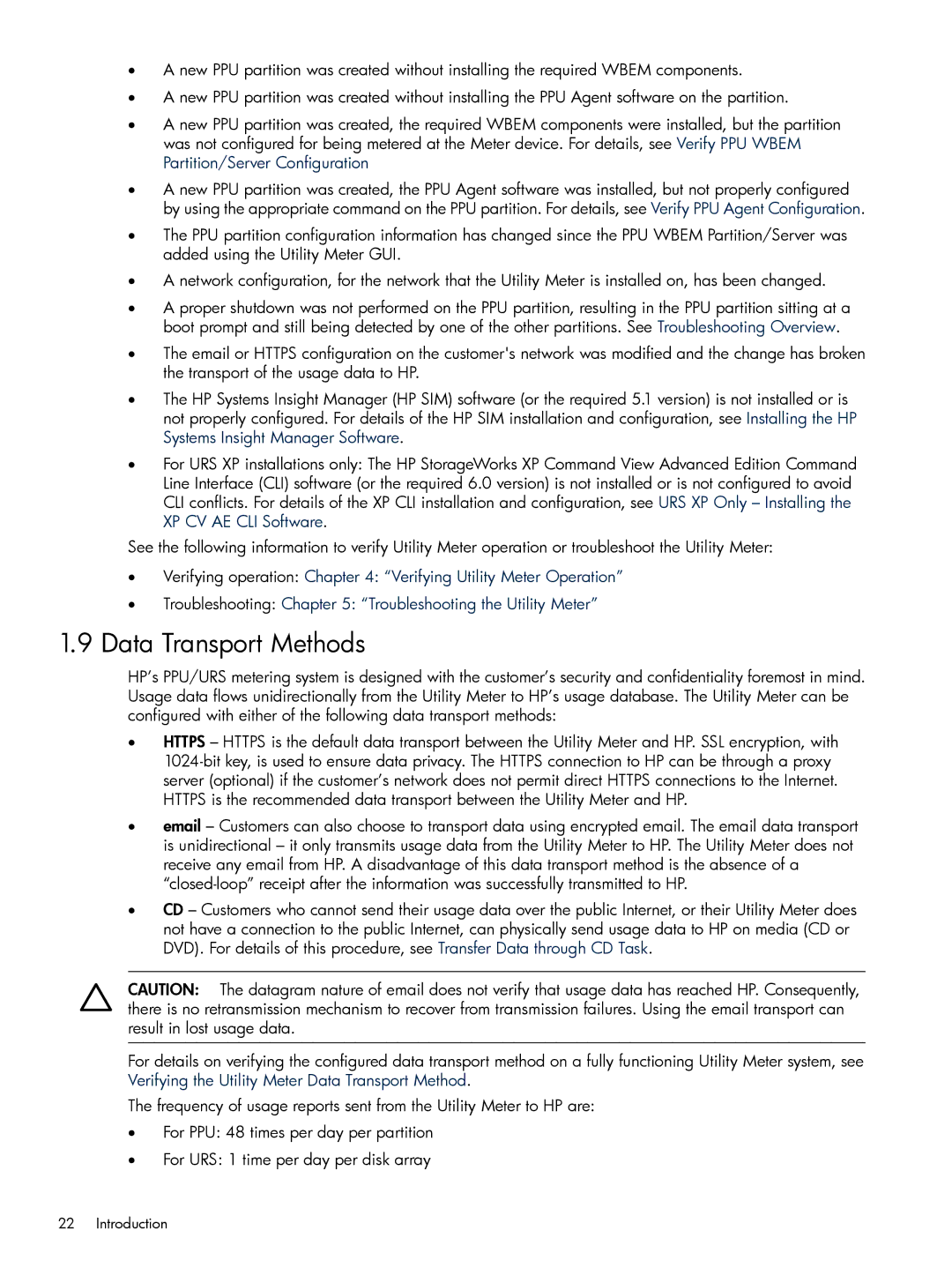
•A new PPU partition was created without installing the required WBEM components.
•A new PPU partition was created without installing the PPU Agent software on the partition.
•A new PPU partition was created, the required WBEM components were installed, but the partition was not configured for being metered at the Meter device. For details, see Verify PPU WBEM Partition/Server Configuration
•A new PPU partition was created, the PPU Agent software was installed, but not properly configured by using the appropriate command on the PPU partition. For details, see Verify PPU Agent Configuration.
•The PPU partition configuration information has changed since the PPU WBEM Partition/Server was added using the Utility Meter GUI.
•A network configuration, for the network that the Utility Meter is installed on, has been changed.
•A proper shutdown was not performed on the PPU partition, resulting in the PPU partition sitting at a boot prompt and still being detected by one of the other partitions. See Troubleshooting Overview.
•The email or HTTPS configuration on the customer's network was modified and the change has broken the transport of the usage data to HP.
•The HP Systems Insight Manager (HP SIM) software (or the required 5.1 version) is not installed or is not properly configured. For details of the HP SIM installation and configuration, see Installing the HP Systems Insight Manager Software.
•For URS XP installations only: The HP StorageWorks XP Command View Advanced Edition Command Line Interface (CLI) software (or the required 6.0 version) is not installed or is not configured to avoid CLI conflicts. For details of the XP CLI installation and configuration, see URS XP Only – Installing the XP CV AE CLI Software.
See the following information to verify Utility Meter operation or troubleshoot the Utility Meter:
•Verifying operation: Chapter 4: “Verifying Utility Meter Operation”
•Troubleshooting: Chapter 5: “Troubleshooting the Utility Meter”
1.9Data Transport Methods
HP’s PPU/URS metering system is designed with the customer’s security and confidentiality foremost in mind. Usage data flows unidirectionally from the Utility Meter to HP’s usage database. The Utility Meter can be configured with either of the following data transport methods:
•HTTPS – HTTPS is the default data transport between the Utility Meter and HP. SSL encryption, with
•email – Customers can also choose to transport data using encrypted email. The email data transport is unidirectional – it only transmits usage data from the Utility Meter to HP. The Utility Meter does not receive any email from HP. A disadvantage of this data transport method is the absence of a
•CD – Customers who cannot send their usage data over the public Internet, or their Utility Meter does not have a connection to the public Internet, can physically send usage data to HP on media (CD or DVD). For details of this procedure, see Transfer Data through CD Task.
CAUTION: The datagram nature of email does not verify that usage data has reached HP. Consequently, there is no retransmission mechanism to recover from transmission failures. Using the email transport can result in lost usage data.
For details on verifying the configured data transport method on a fully functioning Utility Meter system, see Verifying the Utility Meter Data Transport Method.
The frequency of usage reports sent from the Utility Meter to HP are:
•For PPU: 48 times per day per partition
•For URS: 1 time per day per disk array
